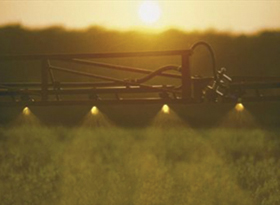Russia has moved into mega farming of livestock, and a lot of American advisers have helped them along the way. Here’s an article segment from Beef magazine, from its June 2014 issue. The article introduces readers to Miratorg, a “vertically integrated” company owned by two shareholders (experienced ranchers) with mind-boggling expansion plans, aided by a hungry government.
In the aerial photo, below, one of 30 pasture/feed lots owned by Miratorg, this one hosting a population of up to 49,000 head. Miratorg’s slaughter plant is located about a mile away.

“Miratorg is the leading investor in the Russian agribusiness industry. It’s the largest meat producer and supplier in the Russian market, thanks to its high-performing vertically integrated agribusiness holding that took a leading position in production, processing, logistic supplies and sales of agricultural products.
In a recent inquiry from Mark Dodd, a Purdue trained agronomist/consultant working for Miratorg, he wanted to know about cover crops. Here’s a part of his description of the farm operation at Bryansk…at about the same latitude in Russia as North Dakota.
“I am an agronomist here in Russia, the largest ag project in the world. over 200,000 angus cows with calves, and not enough pastures, not enough forages, 1 million acres of crops, and I am trying to do everything possible to find different solutions to this problem. Interseeding [of cover crops], double crop after triticale or wheat harvest (July 10), [with the] first frost on about 0ct. 15. Sandy based soils, poor pH,(but applying lime finally) usually good rainfall, had drought this year. Miratorg has its own slaughter plants, and over 500 grocery stores, largest employer in Russia, over 30,000 people.. People are still very poor and some are starving here. I need some help with advice.”

Dan Towery, a well regarded US agronomist and cover crop consultant for the Oregon Ryegrass Commission, has contacted Mark…and begun to tell him about the cover crop successes in the US and Canada, with annual ryegrass and others. We’ll let you know more about those discussions soon.










